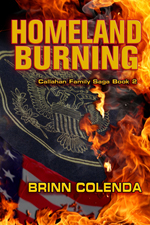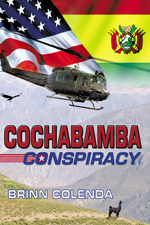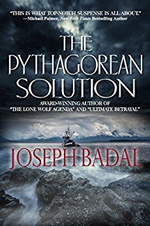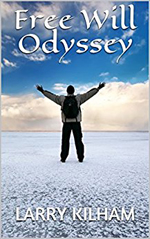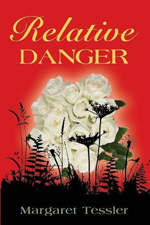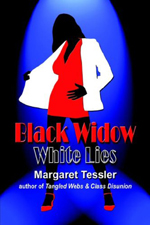Raymond C. Mock is a retired technician turned poet. His first book, A Tried Heart (Mercury Heartlink, 2017), is a collection of poems penned over several decades. Covering a variety of themes, Ray’s poetry is organized chronologically in the order written and reveals “a common story, although uncommonly expressed, of struggle growing up.” Look for A Tried Heart on Amazon and Barnes & Noble. You can contact the author at rcm100@netzero.net.
 How would you describe A Tried Heart?
How would you describe A Tried Heart?
The book description calls it heartfelt experience and observation. Personally, I see it as an autobiography in poetry. Then again, it’s everyone’s biography. It’s a story, I believe a common story—although uncommonly expressed—of struggle growing up. And heart makes it a common story.
What do you hope readers will take away from it?
I hope the title is telling, that readers will sense themselves in the title and find themselves in the book, that they will relive their moments of heart as they read mine.
What unique challenges did this work pose for you?
Initially, it wasn’t a work, just a love, a joy, a discovery of writing and self. Through it, I taught myself poetry and found a road to growth. Following retirement, I joined writing groups that taught me to polish the work. Then came the challenge, publishing.
Tell us how the book came together.
With a significant number of poems from over thirty years of writing, I considered putting a book together, but it was my lunch friends at the senior center who encouraged me to publish. After placing some poetry in the center’s newsletter, they asked me to bring a poem a week to share. They would comment, in general, that they didn’t like poetry but that they liked my poetry—a double compliment.
For the book, I selected poems strong in heart, with surprise, poems of commonality told with unique expression, poems of growth, new experience, and poems short and sharp. I eventually contacted a publisher who had published an anthology in which I had contributed four poems. After hearing his ideas of what a good book entails, I felt we had that in common. He suggested an editor and then did the book layout and cover. As he finalized the book, he said he truly liked the poems, and he hoped I was as excited about the book as he was.
What was the most rewarding aspect of publishing A Tried Heart?
After years of feedback from friends and writing groups, and of hearing authors speak at SouthWest Writers, I felt confident about the poetry (and the book design was pleasing). Personal reviews and reviews on Amazon keep supporting this perspective.
Do you remember what inspired you to write your first poem?
In my thirties, a thought worthy of a poem crossed my mind one evening. It was about getting off my rear end. The poem wasn’t very good, and it didn’t rhyme. So…Okay, I’ll rewrite the worst line and keep rewriting the worst line until it rhymes. By the time it rhymes, it should be good. That’s what happened, and that’s still what happens. I had stumbled onto a writer’s commandment: revise, revise, revise. But that first poem wasn’t good enough for the book.
How important is accessibility of meaning in poetry?
I try to be clear, but sometimes not everyone understands. The writing groups have expressed this at times. And some poems are privy, speaking to a target group.
How does a poem begin for you—with an idea, a form, an image?
I don’t sit and brainstorm. Poems come to me—spontaneity, inspiration, heart. Poems need to be real to write and read that way. I wait for my heart to be moved, but I need to get out of the house for an event to find me. And when it finds me, that is what I try to write. Readers tell me, “I feel it,” or, “You feel like you’re there.” It works for me.
Since you began writing poems, has your view changed of what embodies poetry?
I began writing poems with a very rigid structure—count the syllables, make it rhyme (but don’t predict). I thought that was poetry, and the early poems in my book reflect that (the poems being in the order written). With time, I’ve come to value the beauty of the story more. Again, my book reflects it. But if one goes off-road, the beauty had better be worth it.
What is the best encouragement or advice you’ve received on your writing journey?
The writing groups have been most encouraging. Their comments are generally right on, and they’ve taught me to listen for that slight nuance in the writing that tugs at one and says it’s wrong.
Is there anything else you’d like readers to know about you or your writing?
Let me share two hard-learned, yet unconventional lessons. I used to think that my need for inspiration or heart was a handicap, but I’ve come to accept it as a strength—it makes me different, makes my book different. And I’ve learned to accept writer’s block. When I start writing again, I’m a level above where I was. Periodically, one will be closed for reconstruction, but it’s always worth the wait.
 KL Wagoner (writing as Cate Macabe) is the author of This New Mountain: a memoir of AJ Jackson, private investigator, repossessor, and grandmother. Kathy has a new speculative fiction blog at klwagoner.com and writes about memoir at ThisNewMountain.com.
KL Wagoner (writing as Cate Macabe) is the author of This New Mountain: a memoir of AJ Jackson, private investigator, repossessor, and grandmother. Kathy has a new speculative fiction blog at klwagoner.com and writes about memoir at ThisNewMountain.com.










